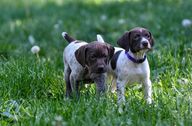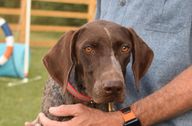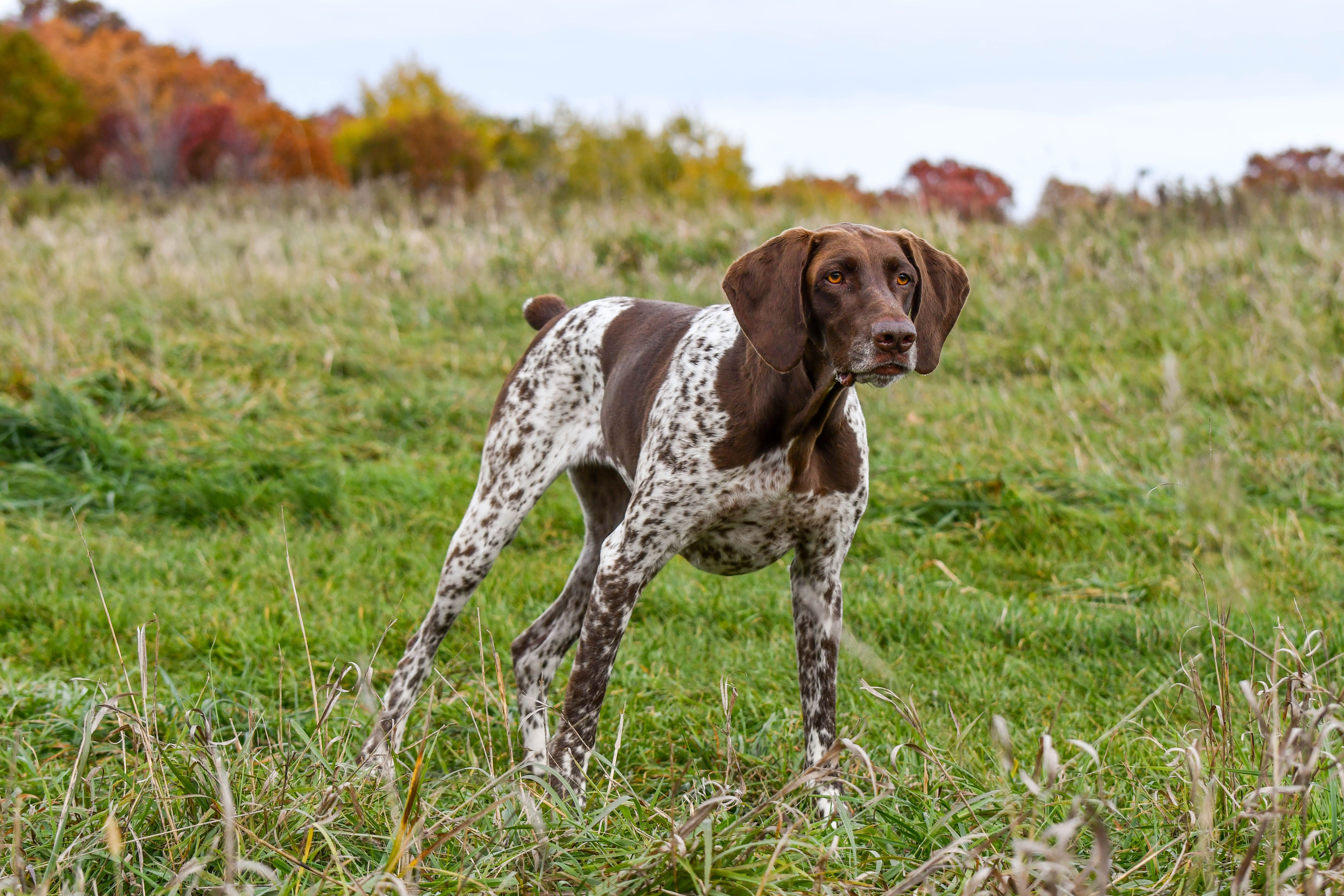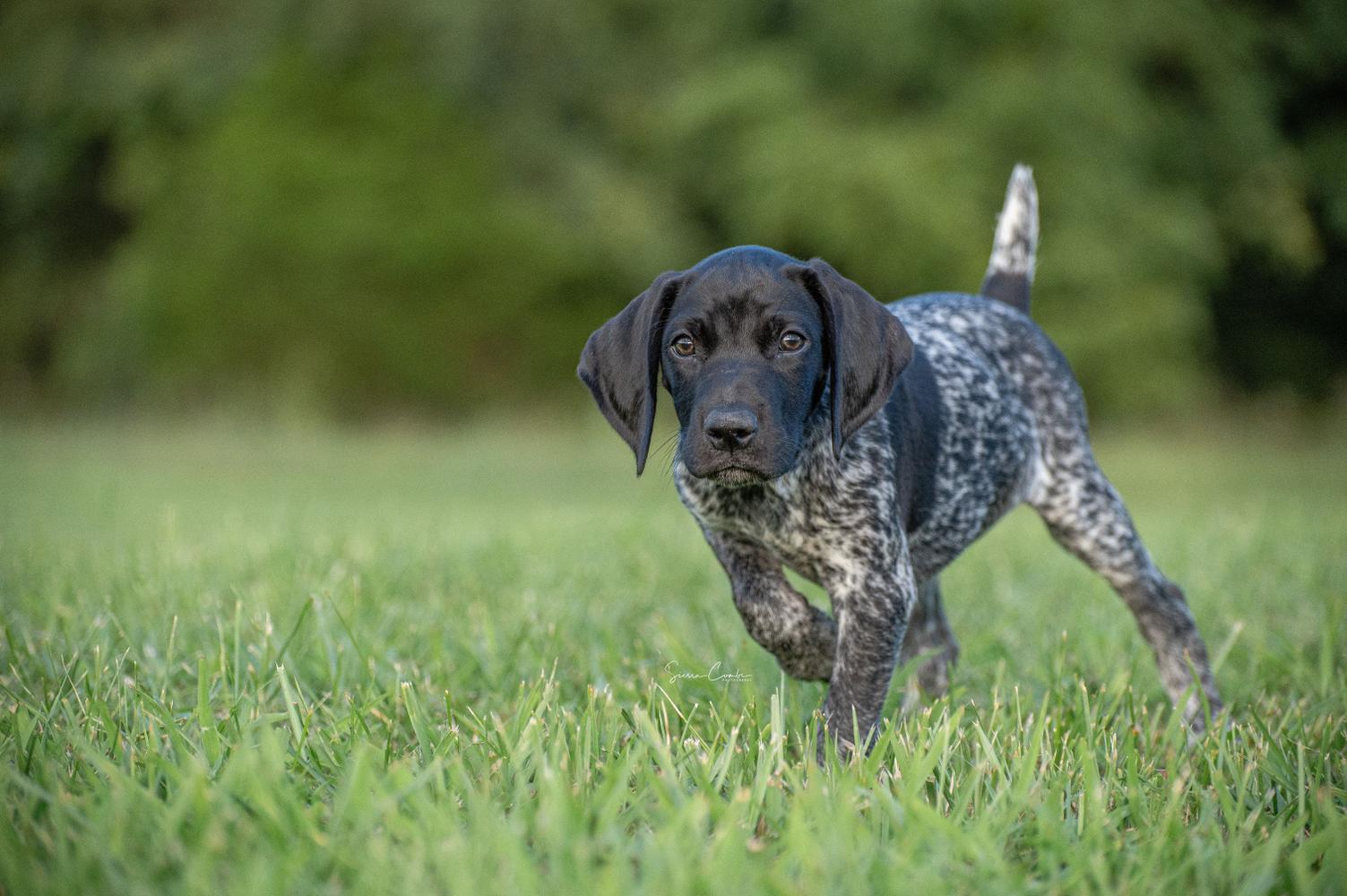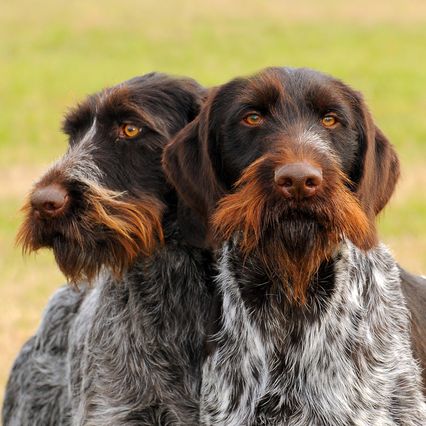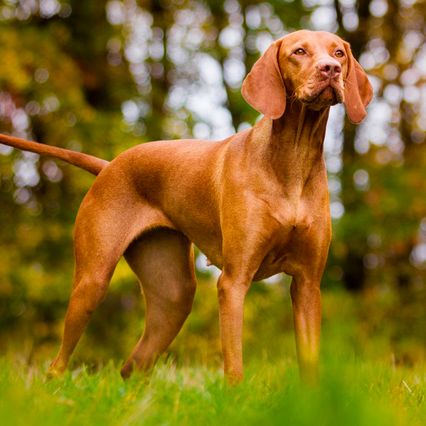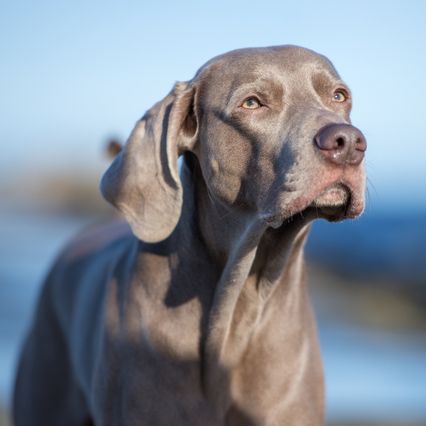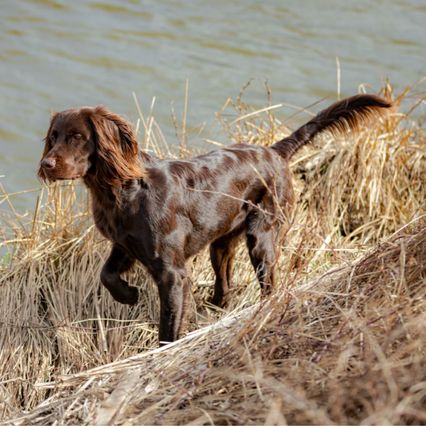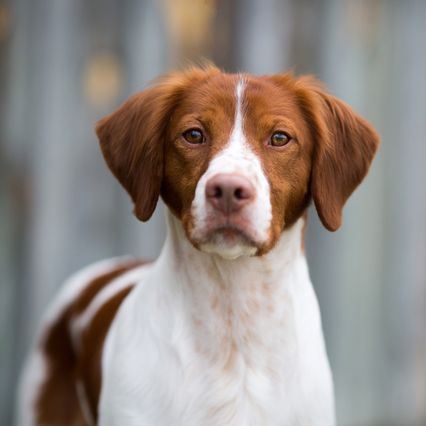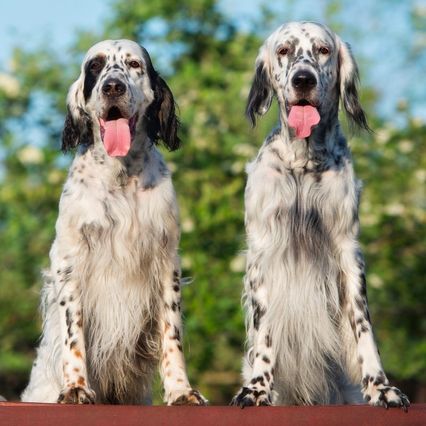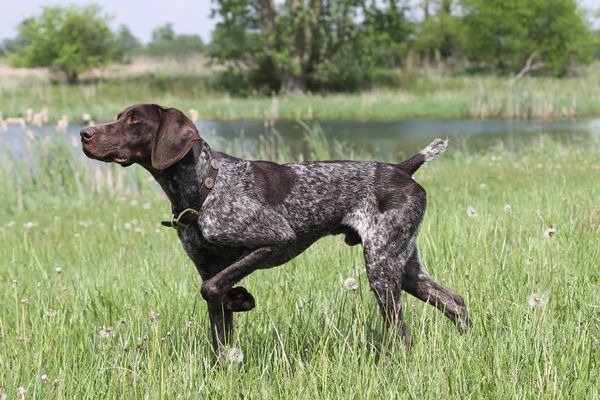
Get to know
German Shorthaired Pointers

They are attentive, affectionate, and biddable, with energy to burn.
Browse available puppies
Connect with reputable breeders to find the dog of your dreams
At a glance
Very High Energy
Energy level
5/5
Minimal Maintenance
Grooming
1/5
Large
Size
Energetic, biddable
Temperament
10-12 years
Lifespan
Quick to Learn
Training
4/5
Medium Vocality
Barking
3/5
At a glance
Energy level
Very High Energy
Grooming
Minimal Maintenance
Size
Large
Temperament
Energetic, biddable
Lifespan
10-12 years
Training
Quick to Learn
Barking
Medium Vocality
Why people love the breed
German Shorthaired Pointers are popular because they have something for almost everyone.
Appearance
The GSP has a sleek, athletic build that combines power with agility. It is very clean-cut with a short, close-fitting coat with a distinctive color pattern.
Grooming
Grooming a GSP is as easy as it gets.
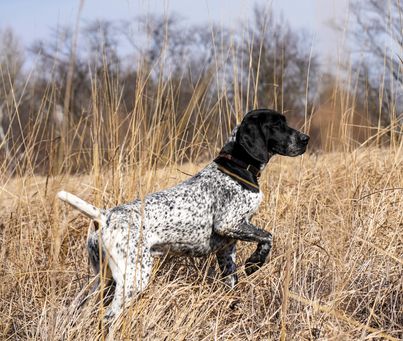
Legacyk Gun Dogs
Breed temperament and characteristics
GSPs traditionally needed a combination of independence and biddability in order to work with hunters and locate hidden birds. They are generally willing to please—unless something else captures their interest.
Exercise
The GSP was bred to use its nose and legs to find hidden birds. It needs physical and mental stimulation to be happy.
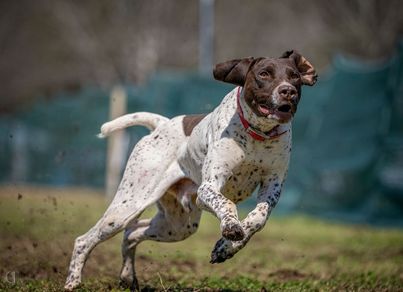
Tiner GSP’s LLC
Training
GSPs are smart, attentive, and willing to please, a combination that makes for a good training prospect. They do, however, have a streak of independence and can be easily distracted as well.
Diet and nutrition
The GSP was developed in the 1600s as an all-around hunter, purposefully bred to combine pointing, retrieving, trailing and even killing game. Only later did it specialize in pointing birds.
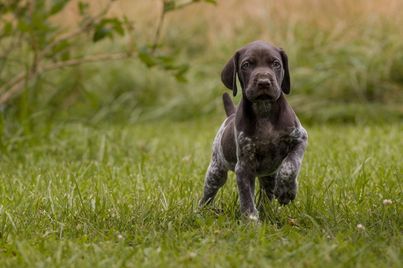
Windsong Pointers
Health issues
GSPs are an exceptionally healthy breed, with no particular health problems that stand out.
Lifespan: 10 to 12 years.
They do have a few conditions to be aware of, but these are still less common.
They include orthopedic issues such as hip and elbow dysplasia, ocular diseases like cone degeneration and entropion, von Willebrand's disease, and hypothyroidism.
History
The GSP was developed in the 1600s as an all-around hunter, purposefully bred to combine pointing, retrieving, trailing and even killing game. Only later did it specialize in pointing birds.
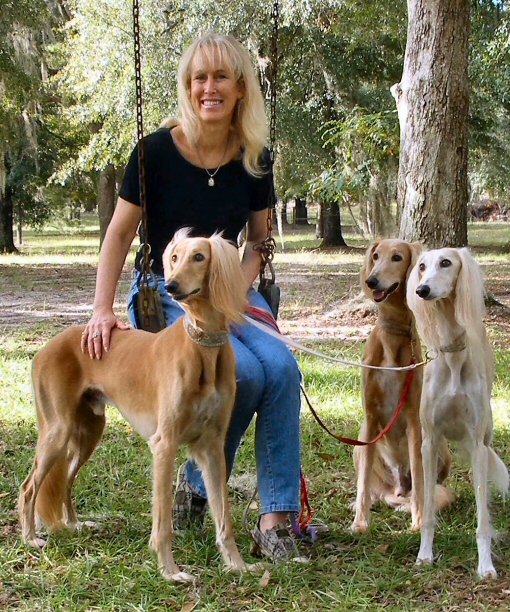
About the author
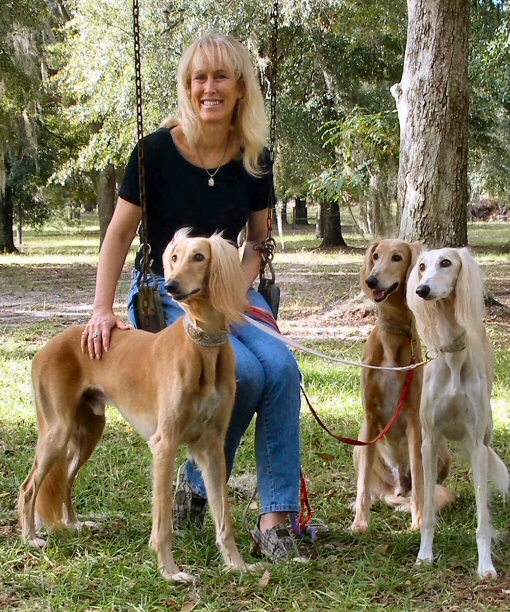
Canine specialist, Caroline Coile, Ph.D., is the author of 34 dog books, including the top-selling Barron's Encyclopedia of Dog Breeds. She’s written thousands of magazine and web articles about dogs. She specializes in canine science, health, breeds and competitions. Caroline has won 20 national dog-writing awards, and was a 2015 Inductee into the Dog Writers Association of America Hall of Fame.
Breed Scorecard
Characteristics and temperament
Affectionate with family
4
Watchdog level
4
Playfulness
4
Adaptability
4
Social needs
4
Temperament
Energetic, biddable
Intelligence
3
Good with other dogs
3
Good with cats or other pets
3
Friendly with strangers
3
Good as a service dog
3
Good for apartments
1
Barking level
3
Appearance
Height
21-25"
Size
Large
Colors
Liver, Liver and white, Liver roan, White and liver, Black roan, Black, Black and white
Coat texture
Smooth, close-lying
Coat length
Short
Training
Trainability
4
Exercise
Exercise needs
5
Exercise time
2 hours daily
Mental exercise needs
4
Favorite activities
Bird-hunting, agility, hiking
Grooming
Grooming needs
1
Brushing frequency
Monthly
Needs professional grooming?
No
Drooling level
1
Health issues
They do have a few conditions to be aware of, but these are still less common.
Other
Bred for
Pointing birds
Country of origin
Germany
Popularity level
5
FAQs
On Good Dog, you can search for German Shorthaired Pointer puppies or dogs in rescues and shelters. Adopting a German Shorthaired Pointer from a shelter or rescue is generally less expensive than buying a puppy from a breeder with ethical practices. Across the United States, there are dedicated rescues that specialize in specific breeds and may even help transport a German Shorthaired Pointer dog to you from another part of the country. Although it can be more cost-effective, adopting the exact breed you're looking for is typically more difficult than working with a responsible breeder. Learn more about adopting a dog from a shelter or rescue.
Prices may vary based on the breeder and individual puppy for sale. On Good Dog, German Shorthaired Pointer puppies are around $1,400. We recommend speaking directly with your breeder to get a better idea of their price range.
GSPs are easy to groom and keep, but they require a lot of exercise.
The pros are their high energy, affectional level, and easy maintenance. The cons are their high energy.
They make a great family dog, being active, fun and biddable companions for people of all ages.





















































































































































































































































































































































































